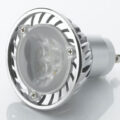Shopping for LED lighting can sometimes be confusing, especially with the amount of jargon that gets used. To simplify this process we have compiled the ultimate LED lighting glossary.
We hope you find this resource useful and if there are any other terms you’d like to see included in our glossary please feel free to get in touch.
Ambient Temperature (Ta): describes the temperature of the air around a light fitting. The performance of an LED light is affected more by ambient temperatures than other forms of light. Heat-sinking helps maintain the lifespan of LED lights.
Ampere: is a measurement of the amount electric current flowing through a circuit. It is often shortened to ‘amp’. Amps are used, along with volts, to calculate watts. Watts represent how much power a light source uses.
Ballast: a device used to manage the power to fluorescent and high intensity discharge lamps. It controls the current and provides the power necessary for these light sources to start. A ballast is an alternative to a starter switch.
Beam Angle: measures the spread of a light source. A standard GU10 bulb has a beam angle of around 38 degrees. Lighting with a wider beam angle is more suitable for general purpose. For more directional lighting, use a narrower beam angle.
Bi-Colour LED: a bi-coloured LED contains two separate colours of LED. This is most commonly red and green. These two LED light bulbs can be lit separately or combined to create over 256 different shades of colour.
Binning: is the process of sorting LED light bulbs. They can be divided using many different criteria, such as colour temperature and brightness. Binning ensures the quality and consistency of LED lights. Exactly how LED light bulbs are sorted will depend on their eventual application.
Brightness: is used to describe the visual intensity of a display screen. Brightness is measured in Nits. A Nit is the same as one candela per square metre. Brightness is often confused with luminous flux, which measures the intensity of a light source.
Bulb Base: is used to secure a bulb in place and connect it to a source of electricity. There are many types and sizes. Different types of light bulbs are often identified by their base. These are normally either a screw or bayonet. For example: GU10 LEDs have a standard 2-pin fitting.
Candela (cd): is a measurement used for LED lights. It describes the amount of light in a particular direction. The term candela began in candles, as a candle was said to give out one candela in every direction.
CFL: stands for compact fluorescent lamp. It is a small fluorescent light, used as a more efficient alternative to incandescent lighting. However, LED lights have a longer lifespan and use less electricity, so are quickly becoming more popular than CFLs and incandescent bulbs.
Colour Rendering Index (CRI): is a measure of the effect a light source has on an object’s colour. The higher a light’s CRI, the better it shows the object’s colour. The maximum level of CRI is 100, which indicates an object’s colour does not change.
Cool White: is a term used to describe the ‘bluey’ white light often used in offices and shops, because it provides a better working light. It is the more common form of white light produced by LED light bulbs. Cool white LED light bulbs are also frequently used in outdoor lighting.
Correlated Colour Temperature (CCT): measures how warm or cold a white light source appears. A warm light source is more orange in colour, and has a lower Kelvin temperature. The more blue a light source, the colder it is said to be, and the higher its Kelvin temperature.
Delivered Light: is a term used to describe the amount of light delivered to a surface by a luminaire. It is measured in lux, which measures the brightness of light over an area.
Dichroic: is a kind of glass used as a reflector in some LED lights. It acts as a filter, letting visible light pass forward, and reflecting infrared light backwards. This means less heat is directed towards the subject of the lamp.
Diffuser: a diffuser is applied to a light source to spread light more evenly. It is made of translucent glass or plastic, and gives a much softer light. This is useful for general lighting, where the light needs to be less directed.
Directional Light Source: describes a light source which points light in a specific direction. This is useful for providing extra light to a task, or for decorative or highlighting purposes. LED light bulbs provide a good directional light source.
Edward E. Hammer: was the inventor of the CFL (compact fluorescent light bulb) in 1976 while working for General Electric. Because of the costs and manufacturing difficulties, GE did not make or sell CFLs. In 1995, other companies adopted his invention and starting manufacturing CFLs.
Emergency Lighting: is designed to work when mains electricity fails, and is powered by a rechargeable battery. Emergency lighting is useful where normal power may be cut off, and it is a health and safety requirement for areas such as fire exits.
Fluorescent: is a kind of tube shaped light, often used for kitchen lighting and in offices. Fluorescent lights contain mercury gases which are released if the lamp is broken. Mercury gas can be dangerous, so LED light bulbs provide a safer and more environmentally friendly option.
General Illumination: is the kind of lighting used to illuminate rooms and open spaces. It does not focus on a particular area. LED light bulbs offer general illumination, so are becoming a popular replacement for old-fashioned light bulbs, because they are longer lasting and save energy.
Ghosting: describes a faint glow from a light source after it has been turned off. It is caused by power remaining in the circuit for a short period of time.
GLS: is a term used to describe a lamp shaped like a traditional light bulb. LED lights are now available in GLS form, so offer a convenient and energy saving alternative to incandescent bulbs.
Heat Sink: a heat sink is used to take heat away from certain parts of an electronic circuit. Because LED light bulbs are sensitive to heat, a heat sink is often an important part of an LED luminaire. Heat sinks help to preserve the lifespan of LED lights.
HID: HID stands for High Intensity Discharge. It describes a kind of light source used in warehouses, football stadiums, and large public areas. They are typically very bright and are also energy efficient. They are often used as car headlights.
High-Power LED: is a very bright LED (Light Emitting Diode) used to create the latest LED lamps. These lamps provide a light source which is closer to traditional lighting such as CFL (Compact Fluorescent Lamp) and incandescent lights.
Incandescent: is the oldest kind of electrical light bulb. Incandescent light bulbs are very inefficient, and use 90% of their energy to product heat. Because they get so hot, incandescent lights can be considered a fire hazard. Incandescent bulbs also have a short life span.
IP: stands for Ingress Protection, and describes an electrical fitting’s level of protection. The first digit in an IP rating refers to solid objects and the second digit describes protection from moisture. The higher the number, the more protected the light source. Useful in bathrooms, where IP65 gives complete protection.
Kelvin Temperature: is a measurement of a light’s colour temperature. Colour temperature describes how orange or blue a light is in colour. Lower Kelvin temperatures give a warmer, more orange-coloured light. Higher Kelvin temperatures are cooler, and give a more blue-coloured light. The symbol for Kelvin temperature is K.
Leading Edge Dimmer: Leading edge dimmers are the most common type of dimmer switch and are used to vary the amount of power to a light source. This is useful to change the intensity of the light produced. Trailing edge dimmers are used to dim LED lights.
LED Driver: an LED driver is a device which controls the amount of power to an LED, protecting it from sudden increases in voltage. Drivers are required to use low voltage LED light bulbs. Using a driver increases the performance and lifespan of an LED bulb.
LED: stands for Light Emitting Diode and is a highly efficient form of lighting. It last 3 times longer than a CFL (Compact Fluorescent Lamp), and 30 times longer than incandescent lights. LED lights come in many different forms and are suitable for any application.
Lumens: are the units of luminous flux. Luminous flux is a measurement of the visible intensity of a source of light. Lighting fixtures are measured by their lux output which is lumens per square meter.
Luminance: is a term used to describe the intensity of light given off from a point on a surface, in a particular direction. It is used to measure how reflective a surface is, and is measured in either foot lamberts (imperial units) or candelas per square meter (metric units).
Luminaire: is a well known term for a light fitting. Household luminaries include ceiling lights, desktop lamps, and spotlights. LED light bulbs provide the best option for luminaries because they are the most efficient and environmentally friendly form of lighting.
Luminous efficacy: is used to describe the efficiency of a light source. It compares light output (measured in lumens) to the amount of power used (measured in watts). This gives the unit lm/w, which stands for lumen per watt. LED lights have a high number of lm/w.
MR (Multifaceted Reflector): is a term used to describe a small, halogen lamp with a reflector which creates a narrow beam of light. Halogen multifaceted reflector lamps are more energy efficient than incandescent bulbs, but far less efficient than CFLs (Compact Fluorescent Lamps) or LED lighting.
Nick Holonyak, Jr: has been called ‘the father of the LED’. In 1962, while working as a scientist for General Electric Company, he invented the first LED. He also helped develop the first light dimmer switch.
Phosphor conversion: is a method used to generate white light with LED light bulbs. Blue, or near ultra-violet LED light bulbs are covered in phosphor, which glows white in reaction to the light produced by the LED. It is the most efficient method of producing white light from an LED.
Photocell: is a device used to control the intensity of a luminaire. It detects light, and adjusts the amount of power to the light source accordingly. This is useful as it gives a more constant level of lighting.
PIR: stands for Passive Infrared detection device. In lighting, it is connected to a luminaire. A PIR detection device turns the light on or off when there is a large change in infrared activity, usually when someone enters or exits a room. This helps to save energy. PIRs are frequently used in security lighting.
Reflector Lamp: is a bulb which has been silvered on its inside layer. It produces a soft-edged beam and is generally smaller in size than other lamps. Reflector lamps are available in a variety of colours and bases, so are suitable for any application.
Retrofit: is a term used when new equipment is installed to upgrade something which has been previously manufactured. Retrofitting LED lighting has many advantages. LED light bulbs are safer, more energy efficient, and have a greater lifespan. Even when factoring in setup costs, LED light bulbs are almost always the cheaper option.
RGB: stands for red, green, and blue; the three basic colours of light. LED lights do not need to be shaded to produce different colours, so are more energy efficient. LED light bulbs combine these three colours to make white light.
Solid State Lighting: is a term which refers to lights which do not have any moving parts, or any parts which can break. Solid State Lighting is more efficient and safer than other kinds of lighting such as fluorescent and incandescent. LED light bulbs are a type of Solid State Lighting.
Starter Switch: a starter switch is required to start fluorescent lamps. Unlike other forms of lighting, fluorescent lights need a starter switch to produce light and control their power. Electronic ballasts are often used as alternatives.
Thomas Edison: was an American scientist who invented the first long-lasting electric light bulb. This was an incandescent bulb, similar to the ones which are now being phased out in favour of more energy-efficient bulbs, such as LEDs.
Transformer: Transformers are used to change the voltage of an electrical supply. This is important as different bulbs require different voltage levels to function properly. Transformers are used to lower voltage to 12v tungsten halogen lamps.
Tungsten Halogen Lamps: Tungsten halogen lamps work in the same way as incandescent lighting and are similar in design. Tungsten halogen lamps are not as energy efficient as either CFL (Compact Fluorescent Lamp) or LED lighting.
Warm White: is the more ‘orangey’ shade of white light normally found in CFL (Compact Fluorescent Lamp) and incandescent lighting. Warm white LED light bulbs are now a popular choice for home lighting because they give a warm feel to a room and are energy efficient.
Thanks for reading; we hope you found this glossary as interesting as it was putting it together. Please let us know what you think and remember, if you’d like anything added just let us know.




